21 Bizarre Foods People Actually Love Around The World
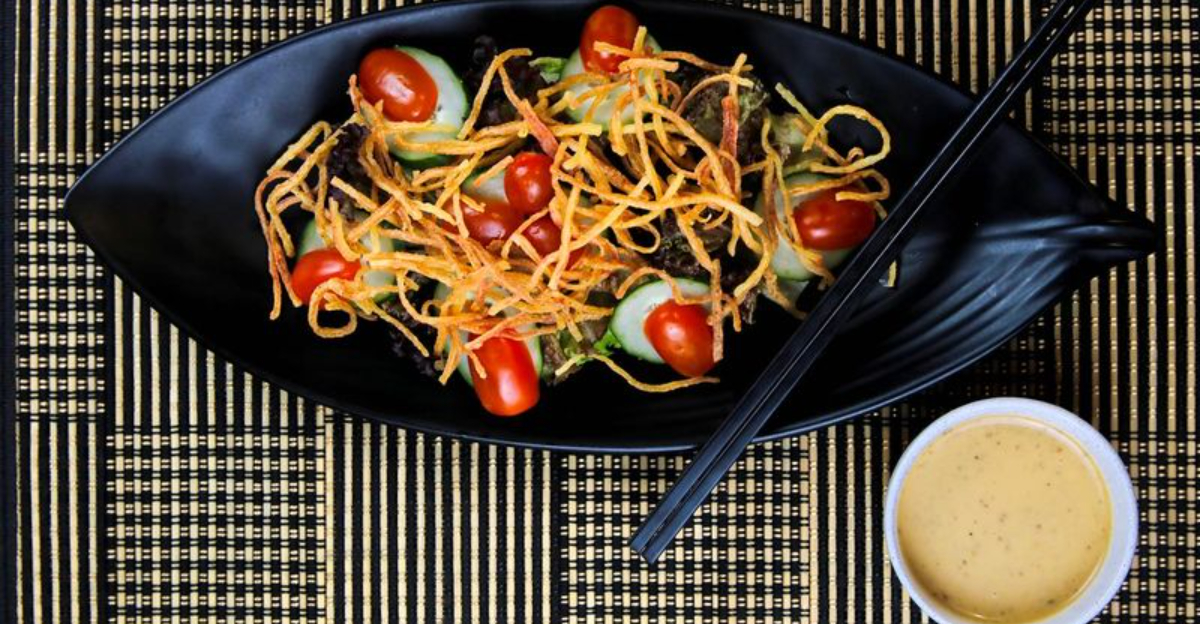
Every culture has its comfort foods—and its curveballs. While some dishes might raise eyebrows (or turn stomachs) to the uninitiated, they’re beloved staples in their home countries.
From fermented sharks to deep-fried spiders and delicacies that crawl, squirm, or stink a little more than you’re used to, these foods tell fascinating stories about tradition, survival, and identity. This isn’t shock value—it’s culture on a plate. So if you’re brave enough to go beyond the familiar, these bizarre bites just might win you over.
1. Balut – Philippines

Cracking open the shell reveals a culinary curiosity that’s not for the faint-hearted. Balut, a fertilized duck egg with a partially developed embryo, is savored directly from the shell with a sprinkle of salt or vinegar. This Filipino delicacy is renowned for its rich, savory flavor and unique texture.
In the bustling streets of the Philippines, balut vendors are a common sight. Locals swear by its aphrodisiac qualities and believe it’s best enjoyed with a cold beer. Despite its appearance, many enthusiasts relish the combination of yolk and tender embryo, finding it surprisingly delicious.
2. Hákarl (Fermented Shark) – Iceland
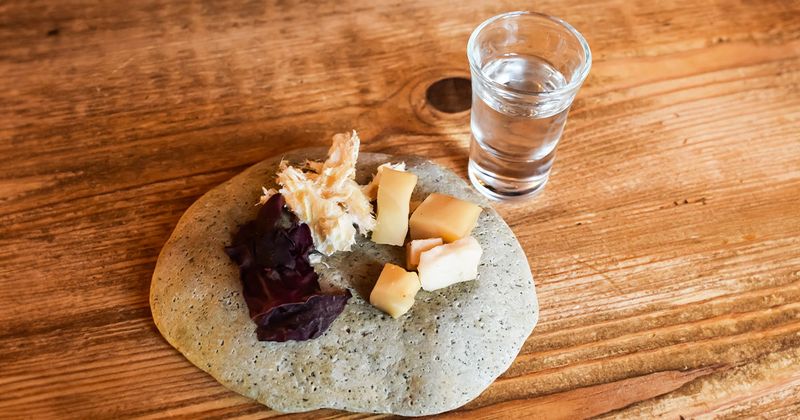
This dish might just make your taste buds do a backflip. Hákarl, a fermented shark meat delicacy, is infamous for its strong ammonia smell. It’s a dish that requires both bravery and an adventurous palate.
The preparation involves burying the shark underground for months to ferment. Icelanders traditionally pair hákarl with a shot of Brennivín, a local spirit, to mask its pungency. Despite its daunting aroma, many find the taste surprisingly mild, with a chewy texture that’s oddly satisfying.
3. Casu Marzu – Italy

A cheese that comes with its own set of wriggly companions might raise a few eyebrows. Casu Marzu is a traditional Sardinian cheese teeming with live insect larvae, prized for its soft texture and intense flavor. The larvae play a crucial role in fermenting the cheese, breaking down fats and creating its creamy consistency.
Some aficionados even enjoy consuming the larvae, claiming it enhances the cheese’s bold taste. While it’s banned in some places due to health concerns, Casu Marzu remains a delicacy for those who dare to try it.
4. Surströmming – Sweden
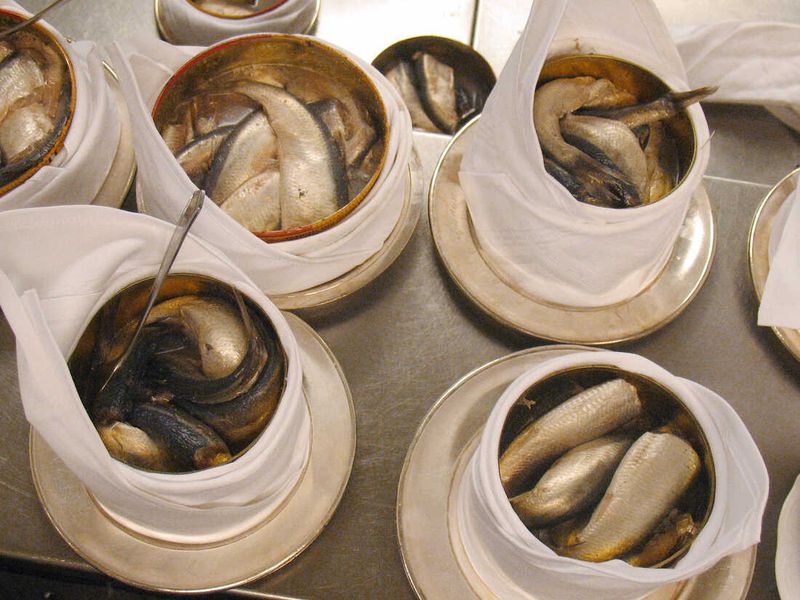
What starts with a hiss ends with a gastronomic adventure. Surströmming, a type of fermented herring, is notorious for its overpowering odor. This Swedish delicacy is traditionally consumed outdoors, often with crispbread and potatoes.
The fermentation process gives it a strong scent, but fans argue that the taste is unexpectedly delicate. The fish is typically eaten with a side of lingonberries or onions to balance its salty flavor. For those willing to overlook its pungency, surströmming offers a unique taste experience.
5. Century Egg – China
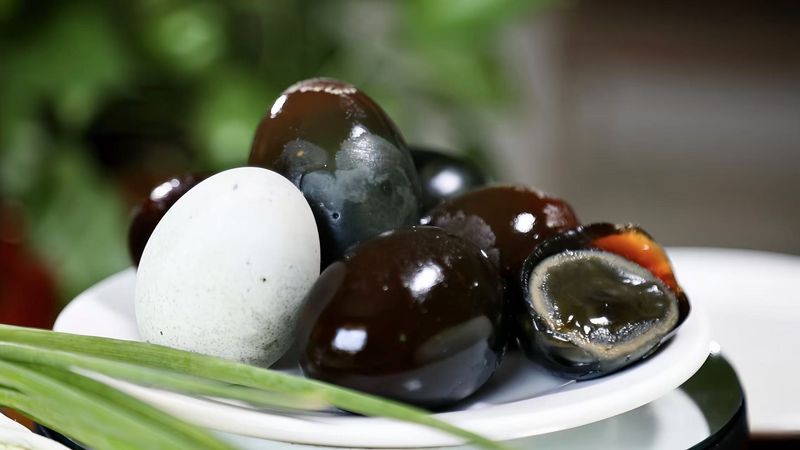
It’s not your typical egg salad ingredient. A century egg, preserved in a mixture of clay, ash, and other materials, transforms into a dark, gelatinous ball over weeks or months. This Chinese delicacy surprises many with its creamy texture and pungent taste.
The distinct appearance and flavor profile of the century egg make it a staple in congee or as a standalone appetizer. Often served with pickled ginger, it’s a delicacy that challenges and delights the senses. Its unique transformation process makes it a wonder of culinary innovation.
6. Escamoles – Mexico

Known as the ‘caviar of the insect world’, these edible ant larvae are a Mexican delicacy. Escamoles are often sautéed with spices and served in tacos, offering a nutty flavor and creamy texture.
Harvested from the roots of agave plants, escamoles are a seasonal treat enjoyed by many. They’ve been part of Mexican cuisine since the Aztec era and are a testament to the country’s rich culinary history. Despite their origin, they’re considered a gourmet ingredient in many restaurants today.
7. Fried Tarantulas – Cambodia

Crunchy, creepy, and surprisingly tasty, this dish is a popular street snack in Cambodia. Seasoned with garlic and salt, tarantulas deep-fried to achieve a crispy exterior.
Despite their intimidating appearance, the taste is often compared to crab or chicken. The legs offer a crunchy bite, while the abdomen is surprisingly soft. For those willing to try, fried tarantulas are an adventurous snack that offers a protein-packed punch and a story to tell.
8. Blood Sausage – United Kingdom & Europe

A staple of hearty breakfasts is made from pig’s blood, fat, and oatmeal. This traditional European dish is favored for its rich flavor and dense texture.
Often served with eggs or as part of a full breakfast, a blood sausage provides a savory, iron-rich start to the day. While the idea may not appeal to all, blood sausage has been a beloved dish for generations and continues to be enjoyed across Europe for its distinctive taste.
9. Tuna Eyeballs – Japan

These aren’t your average fish eyes. Tuna eyeballs, often found in Japanese markets, are boiled or steamed and served with soy sauce. They’re a delicacy that offers a gelatinous texture and mild flavor.
Considered a nutritious snack, the eyes are packed with protein and omega-3 fatty acids. While they might seem daunting, many find the experience of trying tuna eyeballs to be both intriguing and rewarding. It’s a culinary adventure that’s not easily forgotten.
10. Sannakji (Live Octopus) – South Korea
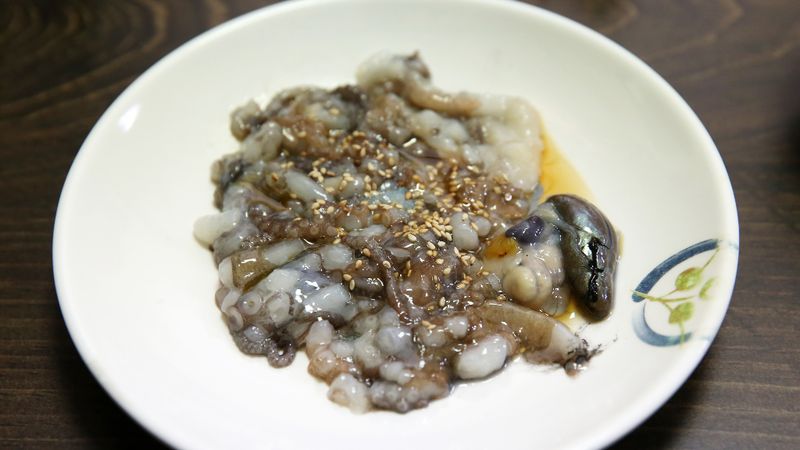
A dish that might just wiggle its way into your heart. Sannakji, or live octopus, is served in small, moving tentacle pieces, often seasoned with sesame oil and seeds.
The sensation of the tentacles moving adds a unique element to this South Korean delicacy. While it requires careful chewing due to the suction cups, many enthusiasts enjoy the fresh, oceanic flavor and chewy texture. It’s an experience that’s both thrilling and flavorsome.
11. Wasp Crackers – Japan

Adding a buzz to your snack time, this protein-rich snack is a Japanese treat that incorporates whole wasps into crispy rice crackers. Wasp crackers are both crunchy and intriguing.
The wasps add an earthy flavor and a bit of extra crunch. Though unconventional, wasp crackers are popular among adventurous eaters looking to try something out of the ordinary. They highlight Japan’s innovative approach to utilizing all available resources.
12. Mopane Worms – Southern Africa

Once you get past the idea of eating caterpillars, you’ll meet a protein-packed snack with a satisfying crunch. Popular in Southern Africa, mopane worms are often dried or fried and eaten as a side dish or snack.
Rich in protein and essential nutrients, mopane worms are an important food source in many African communities. They’re often seasoned with spices to enhance their flavor, offering a taste that’s both earthy and nutty. For the adventurous eater, they’re a must-try delicacy.
13. Pickled Herring – Netherlands

A raw fish delicacy that’s both simple and flavorful is a beloved treat in the Netherlands. Cured in vinegar or brine, it’s often enjoyed by hand with onions.
The tangy and slightly sweet flavor of the pickled fish is complemented by the sharpness of raw onions, creating a harmonious blend of tastes. It’s a traditional dish that’s enjoyed during festivals and family gatherings, showcasing the country’s rich maritime history.
14. Chicken Feet – China & Southeast Asia
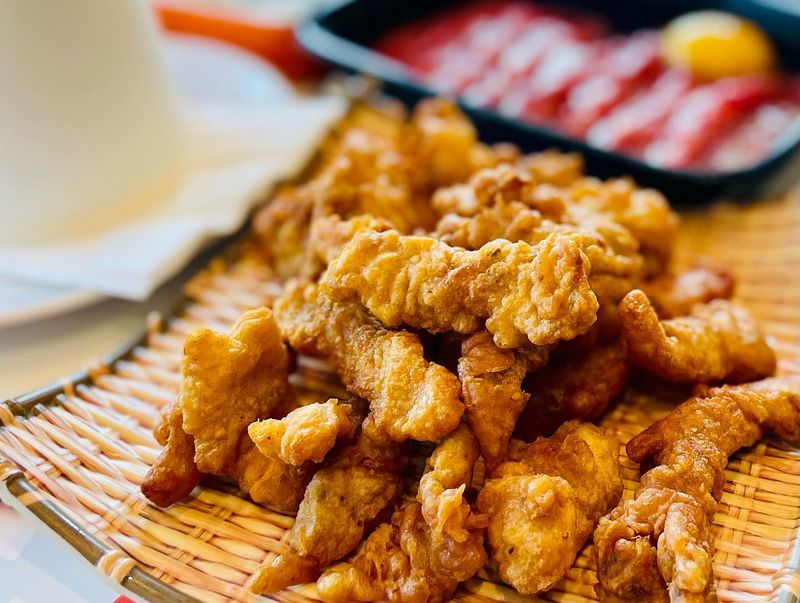
These might not be the first thing you think of when you hear ‘chicken dish’. Chicken feet, cleaned and boiled, are a popular snack and soup ingredient in China and Southeast Asia.
With a gelatinous texture and savory flavor, they’re often seasoned with soy sauce and spices. Despite their appearance, they’re a beloved delicacy enjoyed for their unique taste and nutritional value. For those curious enough to try, chicken feet offer a taste of traditional Asian cuisine.
15. Sea Cucumber – East Asia

A marine delicacy that’s both fascinating and flavorfu is a popular dish in East Asia. Known for its unique texture, it is often used in soups and stews.
The sea cucumber’s gelatinous consistency absorbs the flavors of the dish, providing a rich and savory taste experience. Despite its unusual appearance, it’s highly prized for its nutritional benefits and culinary versatility, making it a staple in many Asian cuisines.
16. Jellied Moose Nose – Canada
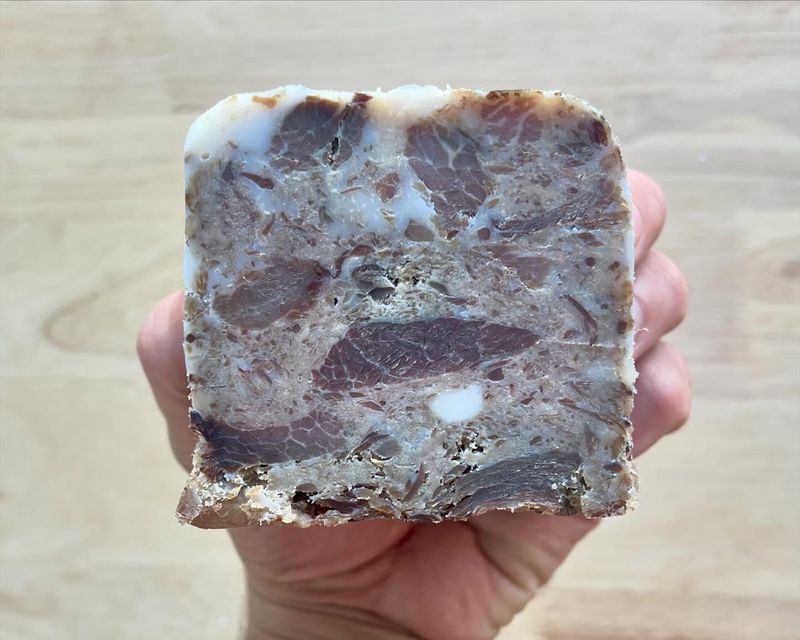
A dish that might just nose its way into your culinary repertoire. Jellied moose nose, a traditional Canadian delicacy, is made by boiling and chilling the snout before slicing it.
The result is a cold cut with a gelatinous texture and mild flavor, often served with pickles or mustard. Though it might sound unusual, it’s a cherished part of Canadian heritage, particularly in the northern regions. For those willing to explore, it offers a taste of rustic tradition.
17. Kiviak – Greenland
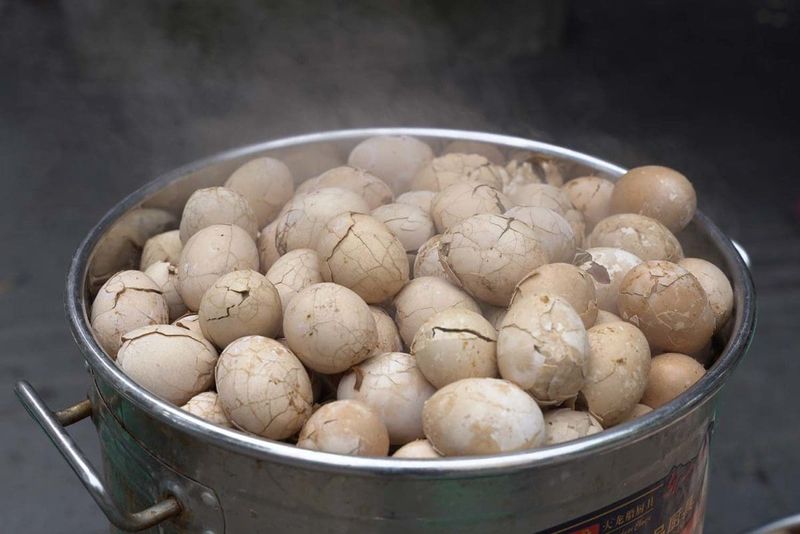
A dish that embodies the ingenuity of Arctic cuisine is made by fermenting auks inside a sealskin for several months. Kiviak is a Greenlandic delicacy that’s traditionally consumed during the winter.
The fermentation process results in a pungent aroma and complex flavor that’s both rich and savory. Though it might not be for everyone, kiviak is a testament to the resourcefulness and culinary traditions of Greenland’s Inuit people. It’s a cultural experience that offers a taste of the Arctic.
18. Shiokara – Japan

Don’t let its humble appearance fool you; this fermented dish packs a punch. Shiokara is made from fish guts mixed with seasoning is a Japanese delicacy eaten in small quantities.
The intense flavor and salty taste might be an acquired taste, but it’s a beloved part of Japan’s culinary landscape. Often enjoyed with a glass of sake, it’s a dish that’s rich in history and tradition. For those with a penchant for bold flavors, shiokara is a must-try.
19. Stinkheads (Fermented Fish Heads) – Alaska

For those who enjoy their flavors potent, there’s a traditional Alaskan dish that’s sure to deliver. Fermented fish heads are buried underground until they become soft and pungent.
Once ready, they’re served cold, offering a taste that’s both bold and memorable. While they may not suit all palates, stinkheads are a cherished part of Alaskan culinary tradition, reflecting the resourcefulness of the region’s indigenous peoples.
20. Baby Mice Wine – China

If you’re looking for a drink with a kick, this wine might just do the trick. Brewed with newborn mice, this Chinese rice wine is known for its strong aroma and medicinal properties.
Considered a tonic for various ailments, it’s consumed in small quantities. While the sight of mice in a bottle may be unsettling, it’s a traditional remedy that’s deeply ingrained in Chinese culture. For those brave enough to try, it offers a unique taste experience.
21. Snake Soup – Hong Kong
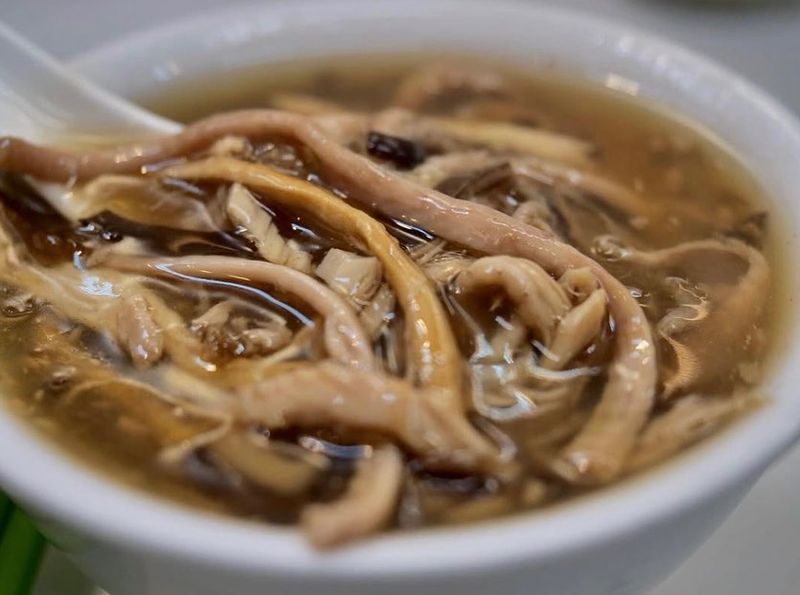
A dish that slithers into the hearts of many is a traditional delicacy in Hong Kong. Made with simmered snake meat, herbs, and spices, snake soup is believed to have warming properties.
The soup’s rich broth and tender meat make it a comforting dish during the colder months. Though it might raise a few eyebrows, snake soup is a beloved part of Hong Kong’s culinary scene, celebrated for its unique flavor and health benefits.
